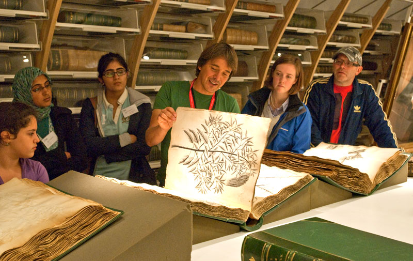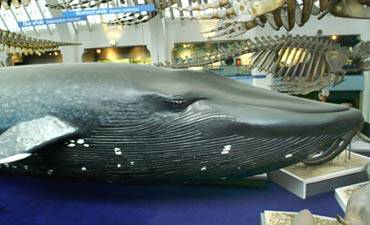Again I have been absent too long with writing a blog piece. I had two started; one on a recent field trip down to Dartmoor with the Dipterists Forum and the second on the lopsided fly that I have been donated (believe me I will finish that one as it is a very cool story – albeit all stories about flies are very cool..but maybe this one is slightly more)
But instead I am sitting outside my hotel in Dushanbe, Tajikistan (ah the fun of fieldwork) writing a blog about a ‘Fight Club’ that I am due to participate in at The Natural History Museum on 23 September. This will be one small part of an enormous event – Science Uncovered 2011.
Let me fill in the details of what goes on. Basically we let the scientists loose in the Museum; out from their labs and officesJ. From behind the scenes about 300 of all sizes and hairstyles will be presented to all who care to attend (and there are many) this free event, from 4 in the afternoon till 10 at night.
This is Dr Mark Spencer pontificating about the finer points of some lovely plants (can you tell that I am not a botanist!!)
And there will be many different types of activities, ranging from desks (aka Science Stations) where we bring out our specimens, to forensic science demonstrations, to the ‘Fight Club’ in which I am involved, … and le't not forget bars!
In our Fight Club, Dr Richie Abel, and I will be arguing about keeping specimens both for perpetuity and accessibility. He will argue against the need to keep specimens accessible due to modern techniques of taxonomic identification whilst I will argue for the need for collections, such as ours, within which people can come and freely access the material. This is by no means a new debate; in fact my last blog piece was all about the subject of why we museum’s need to maintain collections and some of the many uses for them. This is one step further in the discussion as to why we need to let people have access to them. Let me begin to explain the case for and against this access and then you can respond.
The NHM has over 80 million specimens, with the entomology department having about 32 million of them (just a guess mind you!).
Some of the collection….
What’s the point of having all of these specimens you may ask? Well there are several (in fact there are many more than several but that would spoil the fight wouldn’t it if I gave away everything here!!). But let me just concentrate on one for the moment….
I covered in my previous blog piece about why there is a need for the killing of specimens as identification of invertebrates is very difficult when they are still alive.... Oh I knew that I could get genitalia into this piece if I tried!! Now Richie is the king of the MicroCT Scanner – a very fancy piece of kit that theoretically can do whole body scans of very small creatures (we have looked at the insides of beetles and moths). Ideally we can use this to make 3-dimensional images of the internal anatomy of any specimen that we choose to study.
This video on the Museum's website is of the external morphology of a Rhinoceros Beetle Oryctes boas
Imagine putting on some special goggles and being able to walk inside an insect! That would be most cool….some crazy entomological theme park….
But there are problems. My flies are very weak internally – not many of them have sclerotised genitalia (i.e. it is made from very soft internal tissues) especially the females. You need to use certain products to stain the material to ensure that they are seen by the scanner, which is permanent (how comfortable would you feel doing that with a Linnaeus type? Or one of Darwin’s specimens? Or the only specimen in the collection of a species?) But lets for argument sack ignore those issues. We scanned the specimen and now Richie has us throw away the material as we have a great 3D image of the specimen. Let’s say for arguments sake that we have also sequenced the specimen. And let’s say we have removed all the label data and uploaded this to the database. Oh and have digitally imaged the specimen, head, ventral (bottom up), dorsal (top down), both sides, wings and genitalia (I have a lot of rude insect pictures J). I think that’s it for now. So let’s get on with the other 31,999,999 specimens in the Entomology department……. we could throw away or lock up the present collection in say…quite a few thousand years! Dr Vince Smith and Dr Vladimir Blagoderov calculated recently that to digitise the Museum’s collection (that is just photographing a specimen and uploading the label data) would take 1400 years! …and that of course is presuming that we do not develop any new techniques to aid in identification (because that has not happened previously has it ;) ) and I wonder where we would get both the money and staff to do this?
We are just not ready to throw away the keys. And that is only for the specimens that are already in the collection. We have maybe in the collection a representation of half of the global diversity that is has been described on Earth but this is approximately only 1.9 ma specimens. Our present guess is that this does not even come close to the total number of species alive at the moment. In fact we think that we have a further 5 to 10 million to go. Only in the last few days was there a news piece on the work of estimating global species richness and the techniques that we would have to employ to do this.
We need these new techniques to help us identify things quickly but we need to retain the specimens as a reference for us to cross examine with these new specimens as already pointed out – we have not the time, money or equipment to do all of that at the moment!
A second point that Richie maintains is that OK we may need the specimens but why can’t we keep them locked up and away from harms way, with just the images on display/ online etc. The specimens are not just maintained in the museum for the scientists/academics/naturalists etc but also for all that want to look at nature. My argument for that is to just go and look at the galleries. Sure, we can all read books, download images or watch documentaries. But nothing will replace the experience of being able to stand next to the blue whale and take in the sheer size of it, or look at the diversity of insects in the Darwin Centre that is evident to the visitors as they walk around.
One way to think about this Richie, is to ask ‘why go on holiday?’ Why not just look at other people’s photos? If we are to inspire the next generation, and the generation after that to maintain the biodiversity of the planet then we need to engage them in the subject matter.
The blue whale
Specimens in the Darwin Centre Cocoon
P.S. If you would like to help us pick a topic for the Fight Club debates, visit this thread in our Science Uncovered online community and join in.






